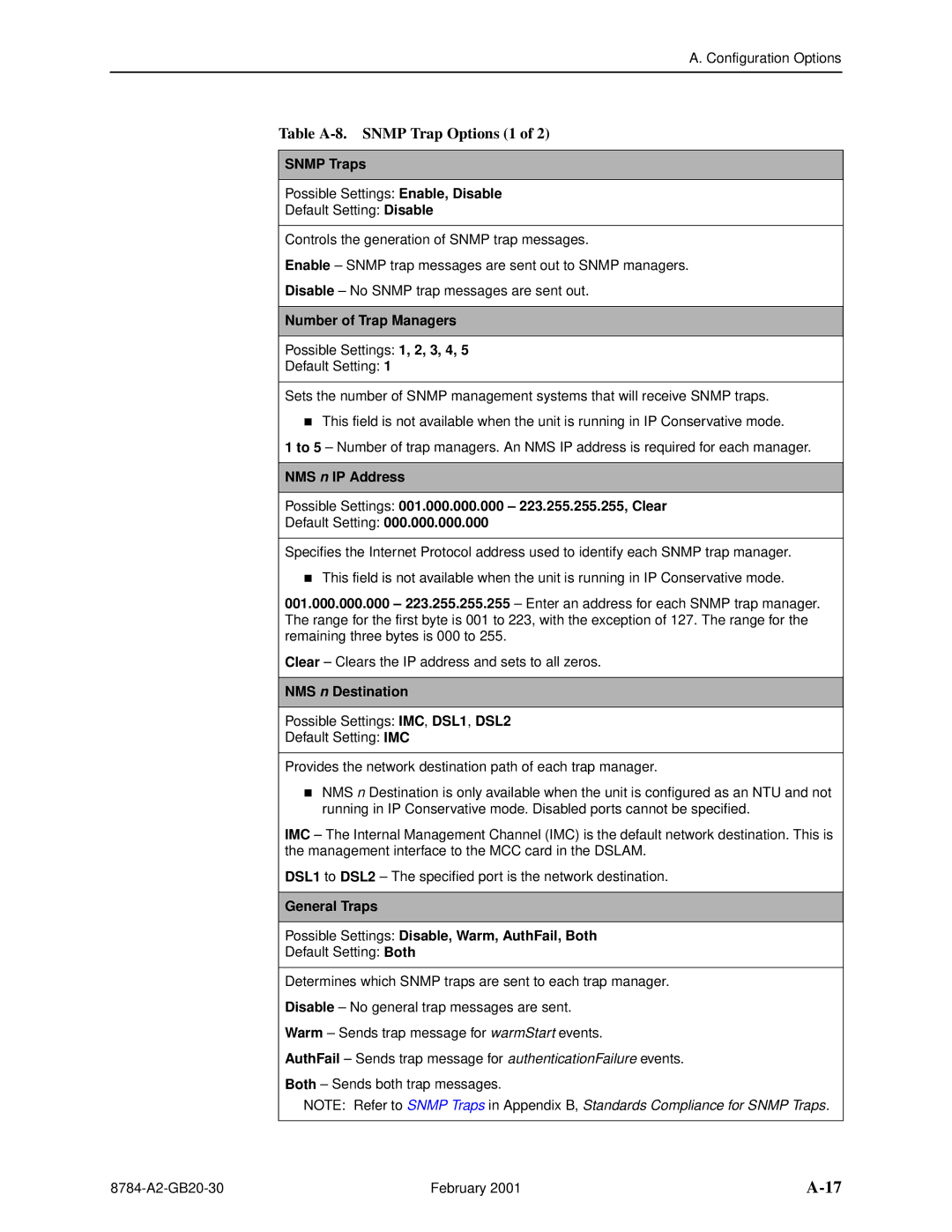
A. Configuration Options
Table A-8. SNMP Trap Options (1 of 2)
SNMP Traps
Possible Settings: Enable, Disable
Default Setting: Disable
Controls the generation of SNMP trap messages.
Enable – SNMP trap messages are sent out to SNMP managers.
Disable – No SNMP trap messages are sent out.
Number of Trap Managers
Possible Settings: 1, 2, 3, 4, 5
Default Setting: 1
SetsTthe number of SNMP management systems that will receive SNMP traps.
This field is not available when the unit is running in IP Conservative mode.
1 to 5 – Number of trap managers. An NMS IP address is required for each manager.
NMS n IP Address
Possible Settings: 001.000.000.000 – 223.255.255.255, Clear
Default Setting: 000.000.000.000
SpecifiesTthe Internet Protocol address used to identify each SNMP trap manager.
This field is not available when the unit is running in IP Conservative mode.
001.000.000.000 – 223.255.255.255 – Enter an address for each SNMP trap manager. The range for the first byte is 001 to 223, with the exception of 127. The range for the remaining three bytes is 000 to 255.
Clear – Clears the IP address and sets to all zeros.
NMS n Destination
Possible Settings: IMC, DSL1, DSL2
Default Setting: IMC
ProvidesTthe network destination path of each trap manager.
NMS n Destination is only available when the unit is configured as an NTU and not running in IP Conservative mode. Disabled ports cannot be specified.
IMC – The Internal Management Channel (IMC) is the default network destination. This is the management interface to the MCC card in the DSLAM.
DSL1 to DSL2 – The specified port is the network destination.
General Traps
Possible Settings: Disable, Warm, AuthFail, Both
Default Setting: Both
Determines which SNMP traps are sent to each trap manager.
Disable – No general trap messages are sent.
Warm – Sends trap message for warmStart events.
AuthFail – Sends trap message for authenticationFailure events.
Both – Sends both trap messages.
NOTE: Refer to SNMP Traps in Appendix B, Standards Compliance for SNMP Traps.
February 2001 |
